Abstract
Miniature end-plate currents (m.e.p.c.s) were recorded extracellularly from toad sartorius muscle fibres exposed to solutions containing procaine at pH 5.4, 7.4 and 9.9. The decay phase of m.e.p.c.s was analysed to determine whether the effects of procaine were consistent with a sequential channel-blocking model. Averaged m.e.p.c.s measured in the presence of procaine were biphasic, decaying as the sum of two exponential components. However, about 10-15% of m.e.p.c.s decayed as single exponentials and were not biphasic. At pH 9.9 the relative amplitudes of the fast and slow phases were generally consistent with the decay time constants, according to the predictions of the blocking model. Such a correlation was not found at pH 5.4 or 7.4. In addition, the rate of decay of m.e.p.c.s at pH 5.4 did not increase as predicted with procaine concentration. These results demonstrate that the sequential blocking model is unable to account for all of the effects of procaine on m.e.p.c. decay. In addition, the finding that some m.e.p.c.s are single exponentials, while most are biphasic, suggests a heterogeneity of receptor-channel complexes.
Full text
PDF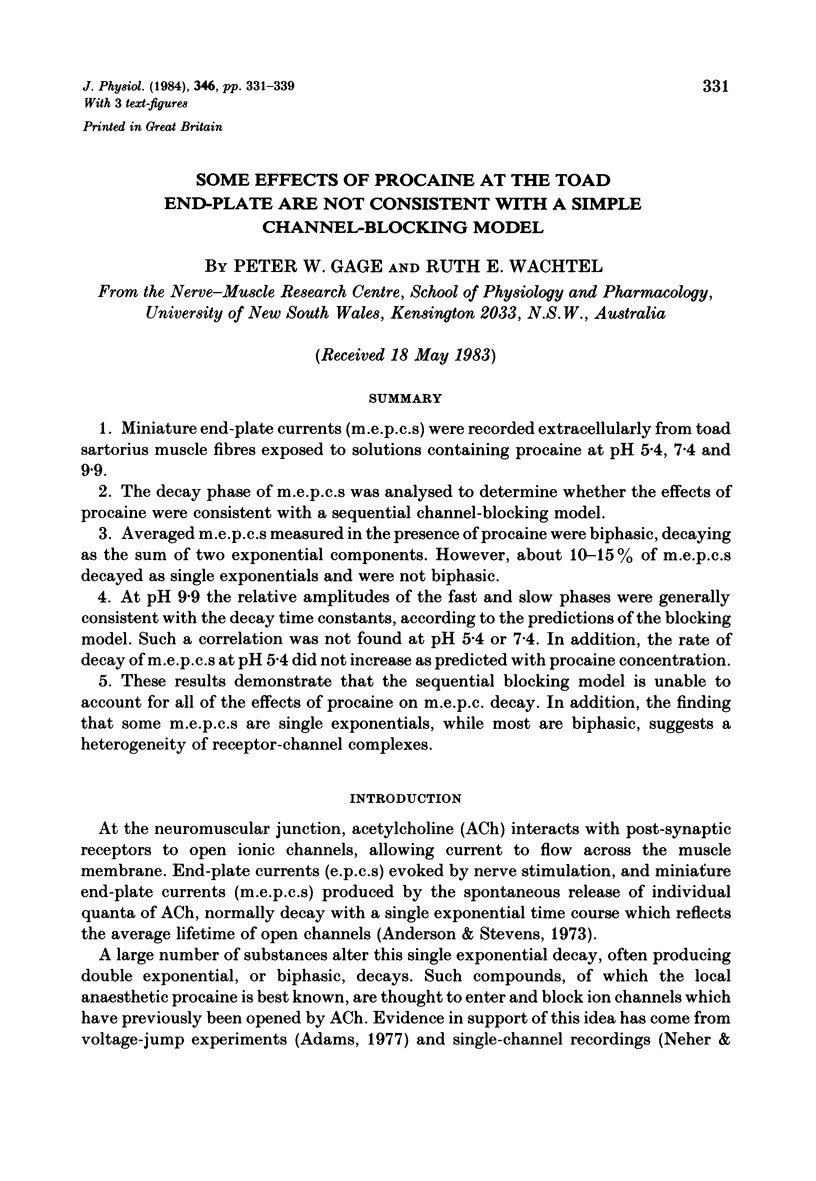
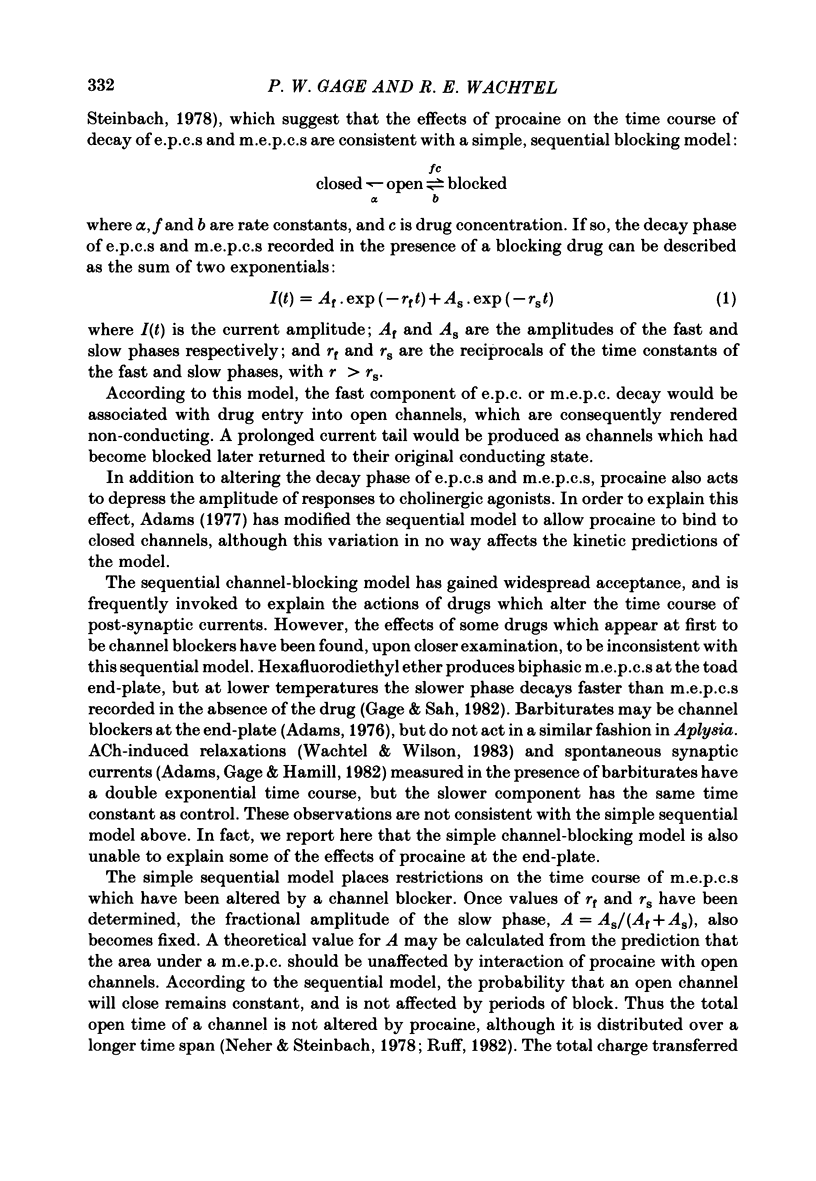
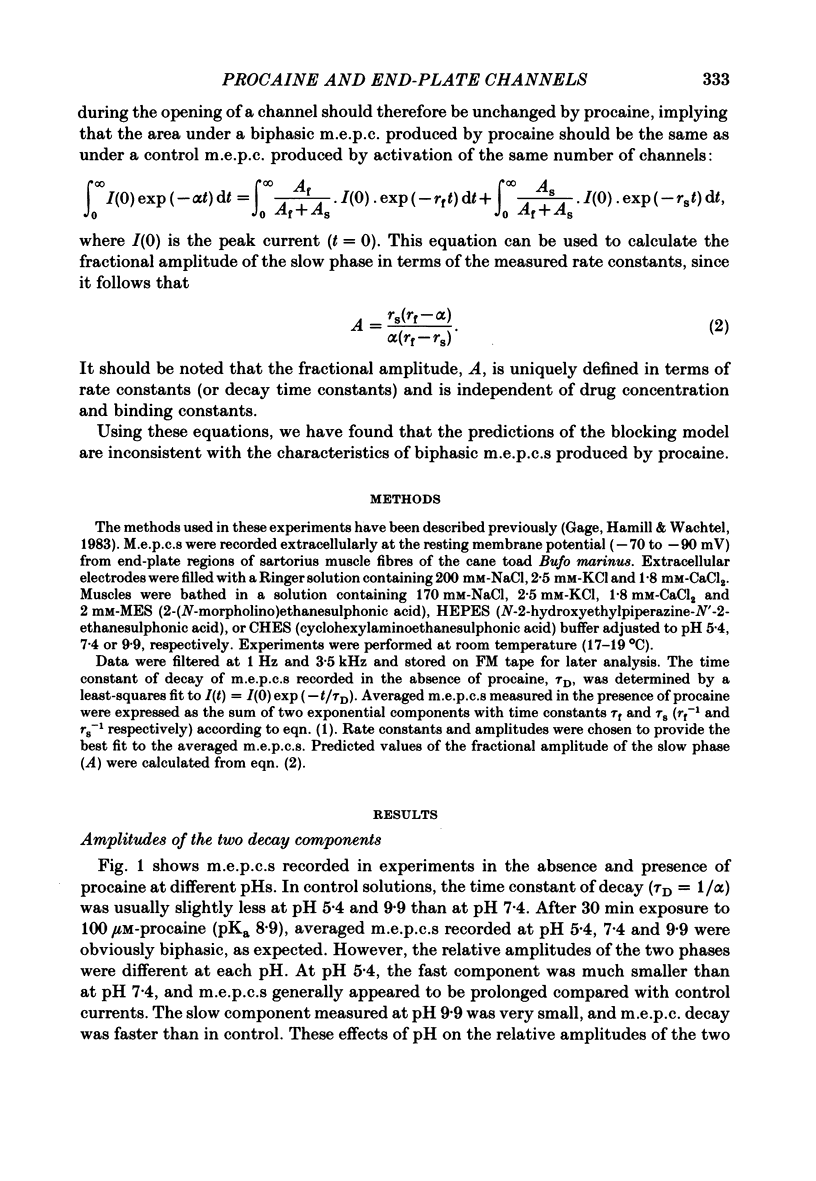

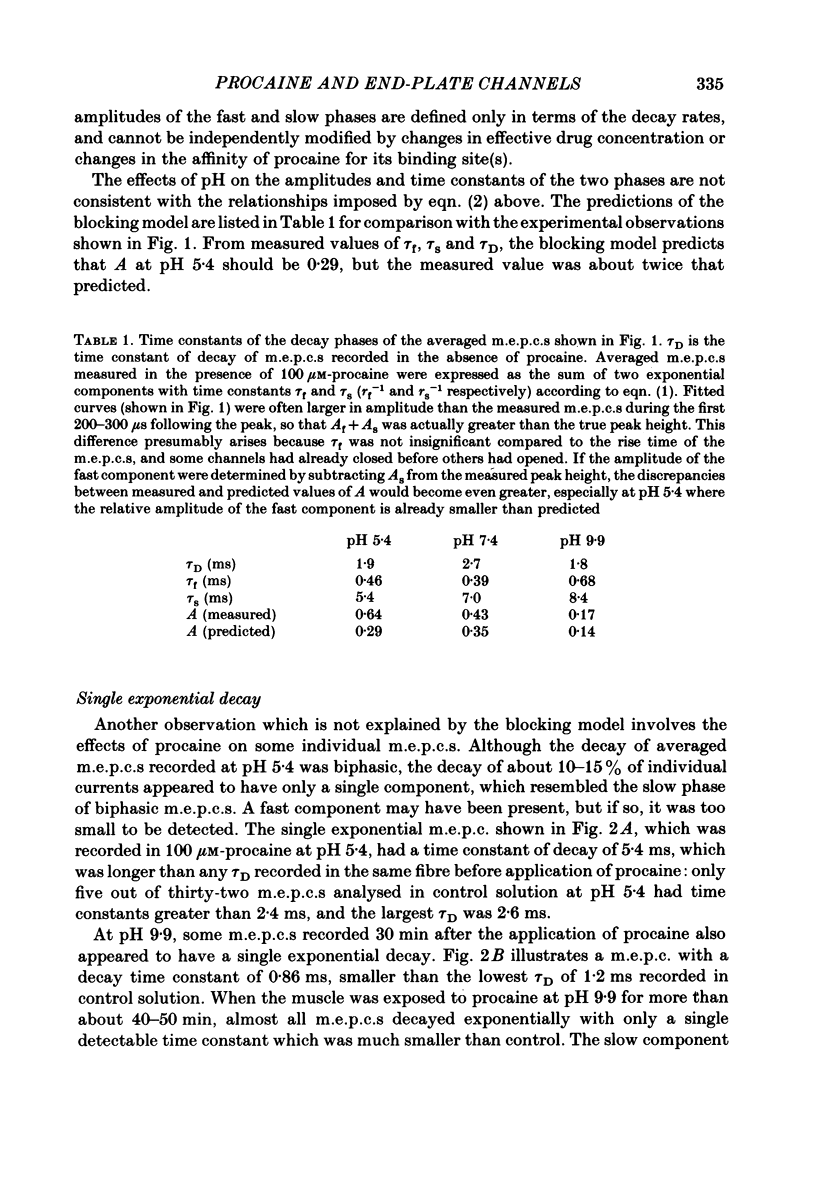

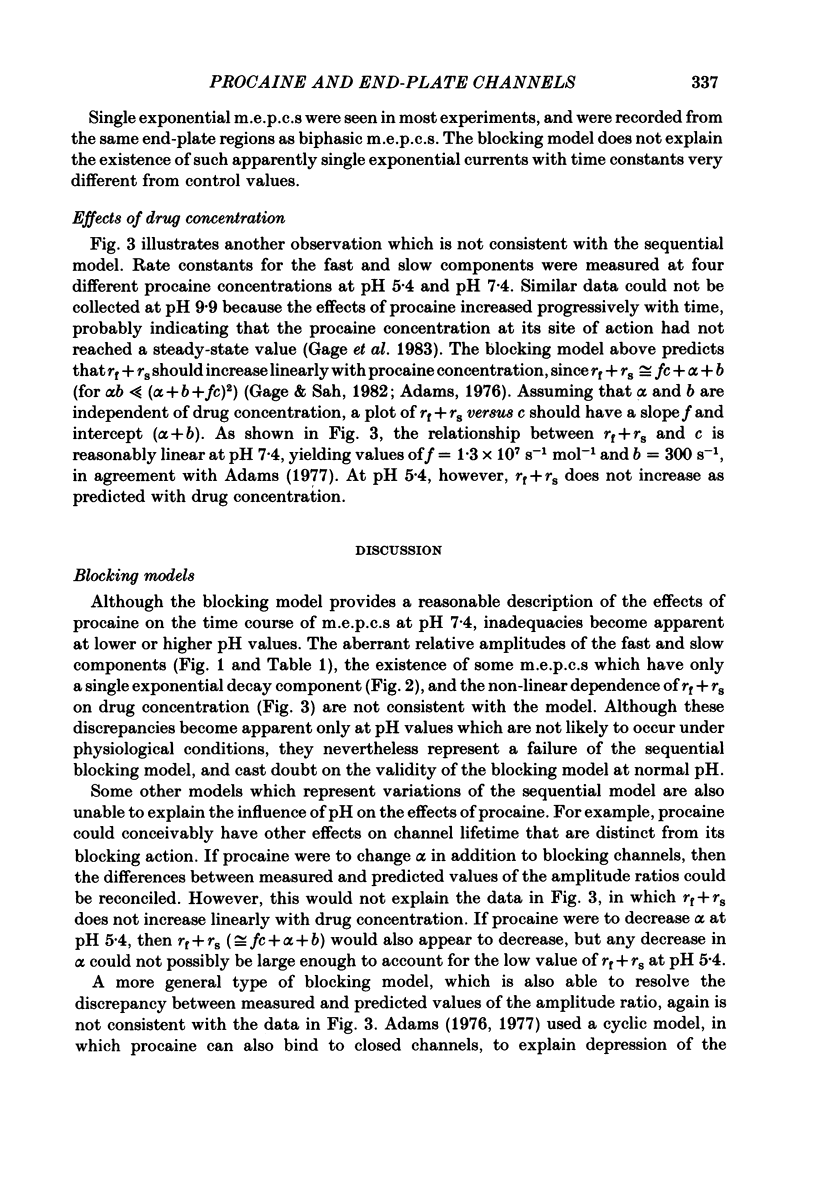
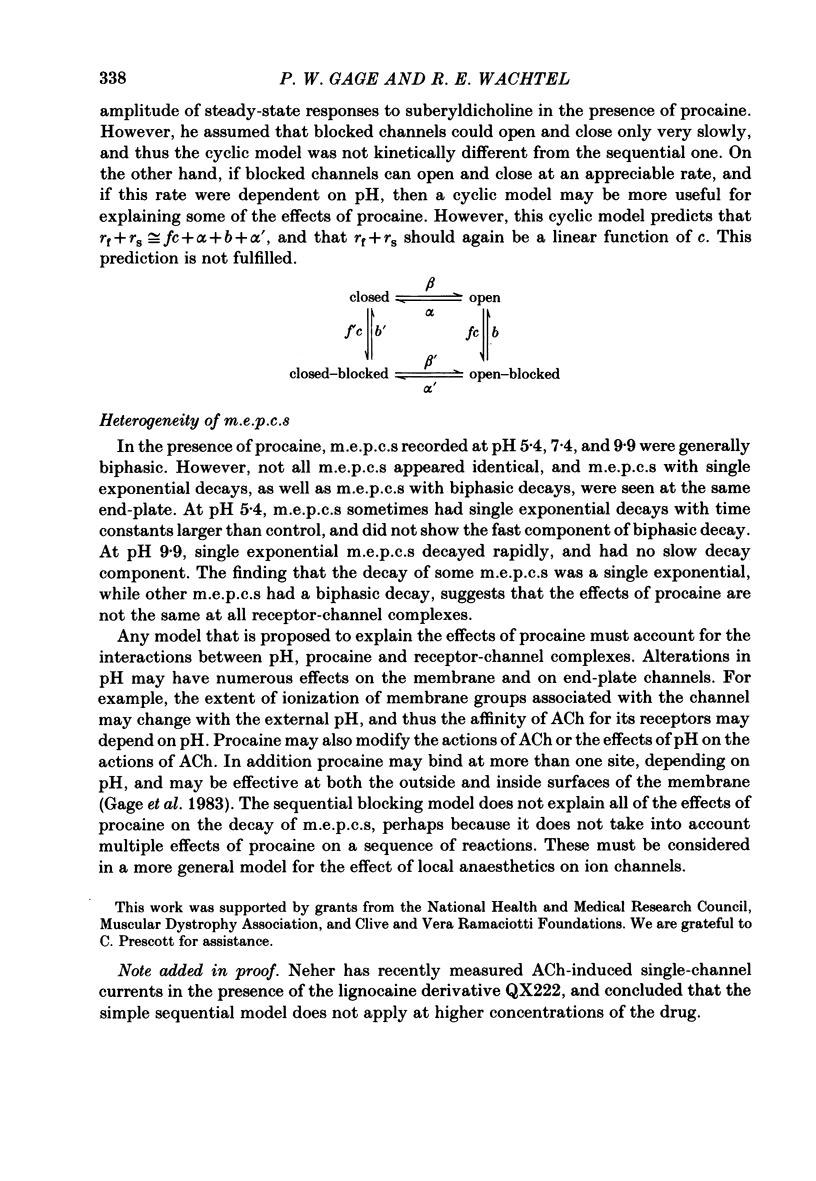
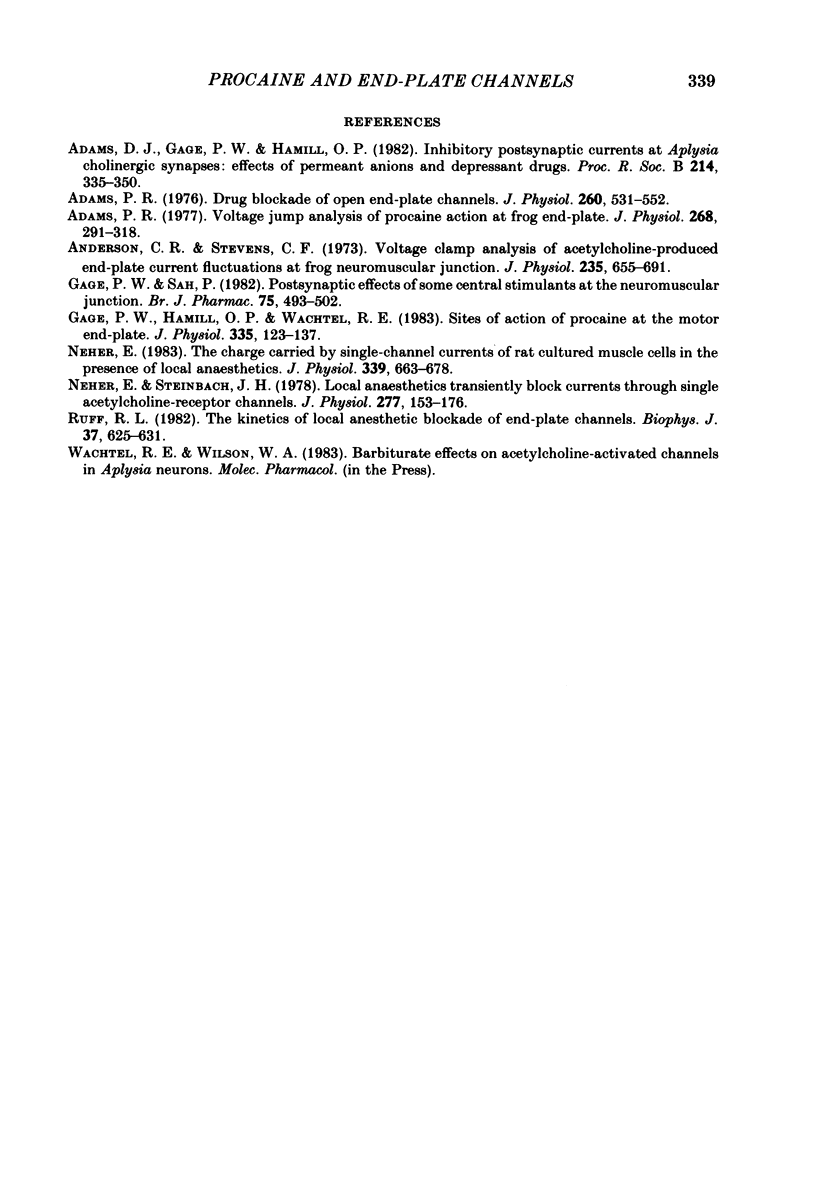
Selected References
These references are in PubMed. This may not be the complete list of references from this article.
- Adams D. J., Gage P. W., Hamill O. P. Inhibitory postsynaptic currents at Aplysia cholinergic synapses: effects of permeant anions and depressant drugs. Proc R Soc Lond B Biol Sci. 1982 Feb 22;214(1196):335–350. doi: 10.1098/rspb.1982.0015. [DOI] [PubMed] [Google Scholar]
- Adams P. R. Drug blockade of open end-plate channels. J Physiol. 1976 Sep;260(3):531–552. doi: 10.1113/jphysiol.1976.sp011530. [DOI] [PMC free article] [PubMed] [Google Scholar]
- Adams P. R. Voltage jump analysis of procaine action at frog end-plate. J Physiol. 1977 Jun;268(2):291–318. doi: 10.1113/jphysiol.1977.sp011858. [DOI] [PMC free article] [PubMed] [Google Scholar]
- Anderson C. R., Stevens C. F. Voltage clamp analysis of acetylcholine produced end-plate current fluctuations at frog neuromuscular junction. J Physiol. 1973 Dec;235(3):655–691. doi: 10.1113/jphysiol.1973.sp010410. [DOI] [PMC free article] [PubMed] [Google Scholar]
- Gage P. W., Hamill O. P., Wachtel R. E. Sites of action of procaine at the motor end-plate. J Physiol. 1983 Feb;335:123–137. doi: 10.1113/jphysiol.1983.sp014524. [DOI] [PMC free article] [PubMed] [Google Scholar]
- Gage P. W., Sah P. Postsynaptic effects of some central stimulants at the neuromuscular junction. Br J Pharmacol. 1982 Mar;75(3):493–502. doi: 10.1111/j.1476-5381.1982.tb09166.x. [DOI] [PMC free article] [PubMed] [Google Scholar]
- Neher E., Steinbach J. H. Local anaesthetics transiently block currents through single acetylcholine-receptor channels. J Physiol. 1978 Apr;277:153–176. doi: 10.1113/jphysiol.1978.sp012267. [DOI] [PMC free article] [PubMed] [Google Scholar]
- Neher E. The charge carried by single-channel currents of rat cultured muscle cells in the presence of local anaesthetics. J Physiol. 1983 Jun;339:663–678. doi: 10.1113/jphysiol.1983.sp014741. [DOI] [PMC free article] [PubMed] [Google Scholar]
- Ruff R. L. The kinetics of local anesthetic blockade of end-plate channels. Biophys J. 1982 Mar;37(3):625–631. [PMC free article] [PubMed] [Google Scholar]


